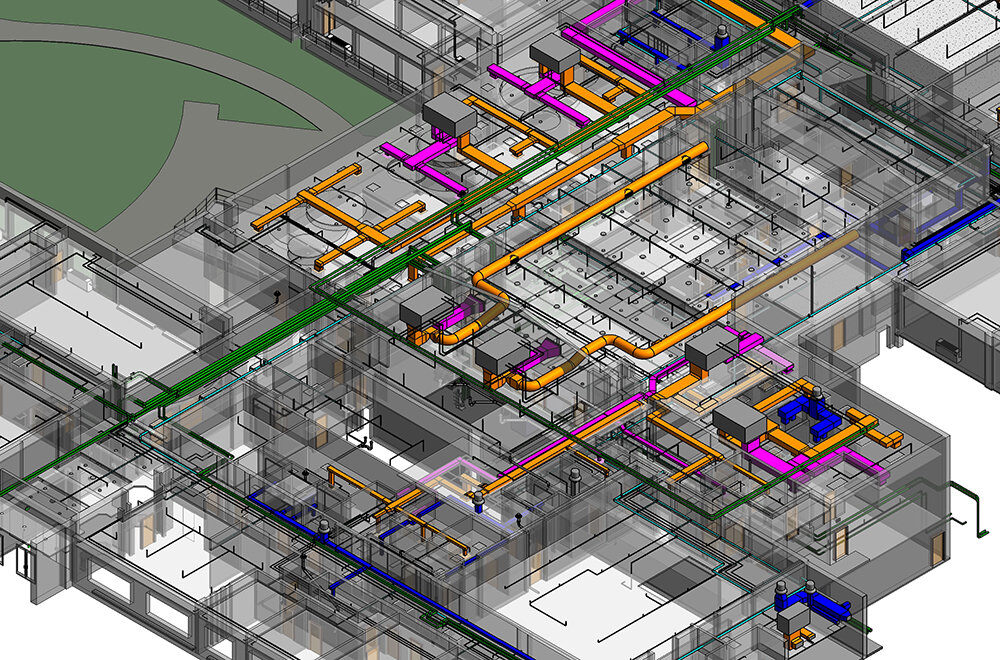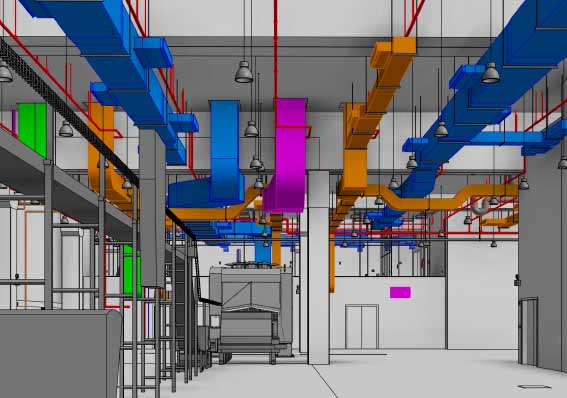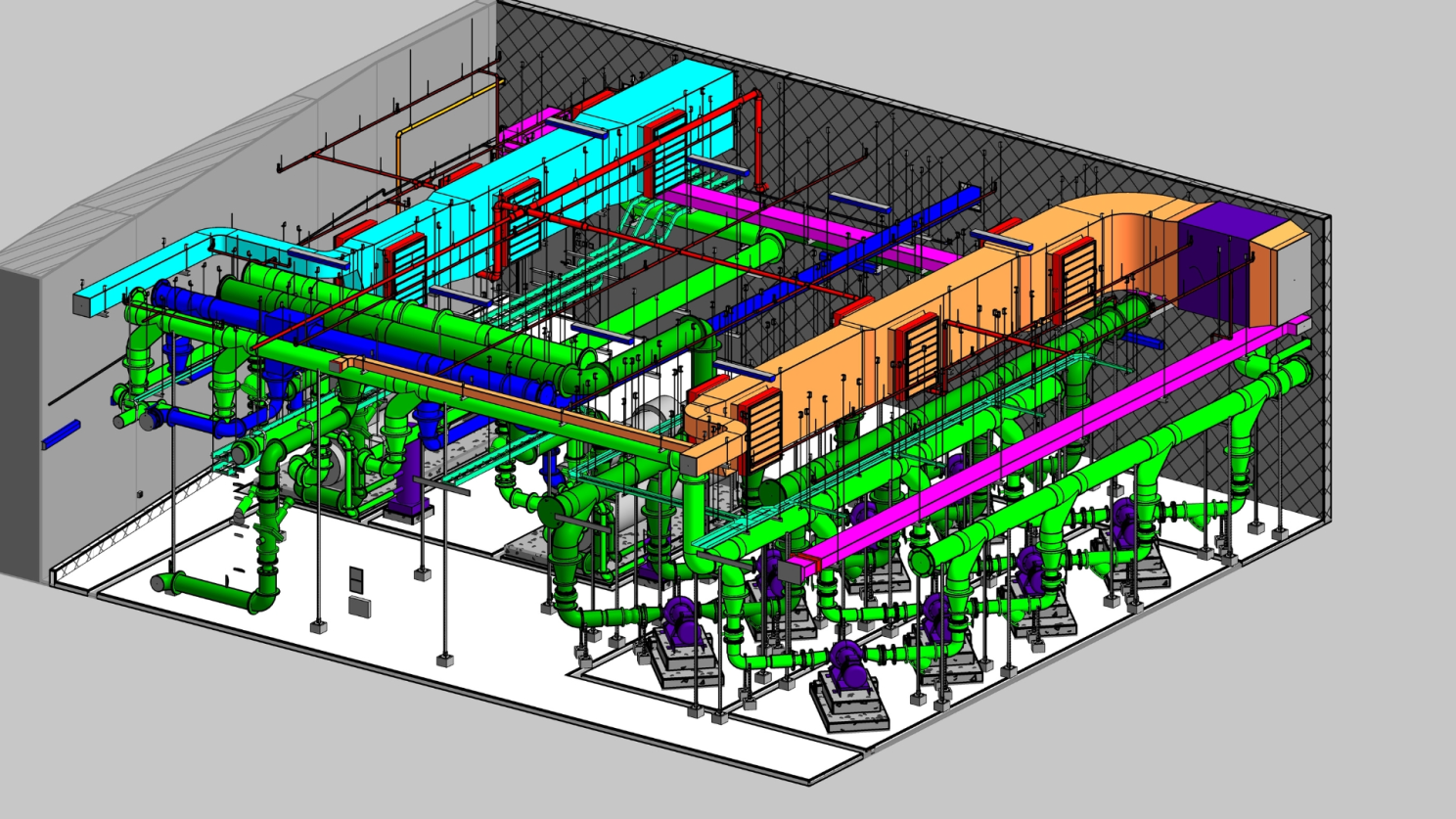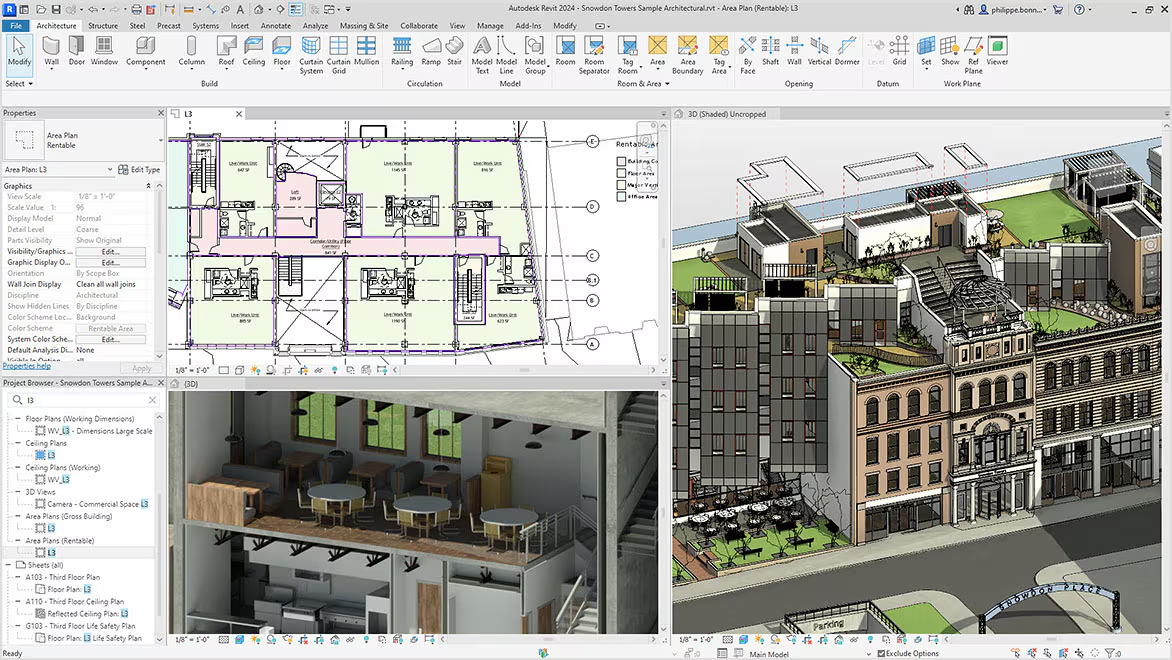
Construction projects nowadays are more difficult than in the past. With tight timelines, increasing costs, and the growing demand for precision, the need for seamless collaboration across disciplines has never been more critical. MEP coordination enters the frame at this stage.
The integration of BIM MEP tools into the planning and execution of projects has become a game-changer. From design to construction, leveraging MEP BIM services ensures everything flows together like a well-conducted orchestra. It is no wonder that professionals and MEP firms alike are rapidly embracing BIM MEP software to reduce clashes, optimise performance, and increase productivity.
What is MEP Coordination?
Let us unpack the term a bit. Mechanical, electrical, and plumbing—abbreviated MEP—are the basic components of any modern structure. So, what does MEP coordination really involve?
Simply put, it is the process of aligning and integrating the MEP design elements with architectural and structural systems to avoid conflicts before they occur on-site. For example, imagine a situation where a duct runs straight through a structural beam—costly to fix and highly avoidable. That is where effective MEP coordination services come into play, detecting and resolving such issues early in the design phase.
It ensures that MEP works in construction do not interfere with one another and that every component fits neatly into place, like pieces of a very sophisticated jigsaw puzzle.
How BIM Transforms MEP Coordination
Traditionally, coordination meant layers of 2D drawings, manual checks, and lots of back-and-forth. But with the advent of BIM MEP, we now have intelligent 3D models that speak the same language across all disciplines.
BIM MEP software allows for the simultaneous modelling of MEP systems alongside architectural and structural elements. Each system—whether it is ventilation, electrical conduits, or water supply—can be viewed and tested in a shared environment. This gives MEP coordinators the ability to visualise and anticipate problems before they become expensive mistakes.
Moreover, MEP BIM modeling provides real-time updates, clash detection, and performance analysis, ensuring the design meets required standards while improving overall construction efficiency in MEP.
Key Benefits of Using BIM for MEP Coordination

So why is everyone buzzing about MEP BIM services and their impact on the construction industry? Here are the major wins:
1. Clash Detection and Resolution
Clash detection is probably the most celebrated benefit of BIM MEP. Whether it is a duct clashing with a sprinkler system or pipes interfering with beams, the software highlights issues before construction begins, saving time, money, and frustration.
2. Improved Collaboration
With all project stakeholders working from the same MEP building model, communication becomes smoother. Engineers, architects, and contractors can all provide input in real-time, leading to faster decision-making and fewer misunderstandings.
3. Time and Cost Savings
By catching errors early and avoiding rework, projects move forward more efficiently. This directly impacts budgets and schedules—two of the most sensitive aspects of any build.
4. Greater Accuracy in Installation
Because MEP BIM modeling includes precise spatial data, the likelihood of on-site guesswork is greatly reduced. Installers know exactly where every component belongs.
5. Easier Maintenance and Facility Management
A well-coordinated MEP system in a digital model makes post-construction operations smoother. From repairs to retrofits, having a full record of MEP services helps facilities teams work faster and smarter.
Challenges in Adopting BIM for MEP Coordination & How to Overcome Them
While the benefits are plentiful, the transition to MEP BIM services is not without hurdles.
1. High Initial Investment
Adopting BIM MEP software and training your team can be costly at first. But think of it as a long-term investment. Over time, the savings from fewer errors and faster builds will more than cover the upfront costs.
2. Resistance to Change
Not everyone likes change, especially when it involves learning something new. This is common across many MEP firms still rooted in 2D practices. Strong leadership, suitable training, and demonstrating measurable results are necessary to overcome this.
3. Skill Gaps in the Workforce
Perhaps the biggest challenge is the lack of skilled professionals who can confidently use MEP BIM modeling tools.
How Novatr’s BIM MEP Course Prepares Professionals for Efficient MEP Coordination
1. Learn from Industry Leaders
Get trained by top MEP engineering professionals and BIM experts who have worked on iconic global projects. Understand the real MEP meaning in construction from those who shape it.
2. Hands-On Training with BIM Tools
Work on actual MEP building models using industry-standard BIM MEP software. Learn to execute precise MEP BIM modeling that reduces clashes and boosts project efficiency.
3. Master Coordination Across Disciplines
Build deep expertise in MEP coordination services, from clash detection to design integration, and you will be a valuable asset on any construction site.
4. Work on Live, Industry-Level Projects
Apply your skills to real-world MEP works in construction, mimicking firms' workflows to deliver large-scale, high-performance buildings.
5. Get Future-Ready with BIM MEP Skills
Stay ahead in a rapidly digitising industry. Learn to lead MEP construction projects with confidence, clarity, and cutting-edge BIM strategies.
6. Accelerate Your Career as an MEP Coordinator
Whether entering the field or upskilling, Novatr equips you with the tools, workflows, and mindset to take on advanced MEP coordination roles globally.
Conclusion
The integration of BIM MEP into MEP coordination is more than a tech trend—it is a necessity for the future of building. With benefits like reduced clashes, better collaboration, faster construction, and long-term savings, adopting MEP BIM services is a smart move for any construction professional or firm. Of course, no tool is effective without skilled hands to wield it. That is why upskilling through a reliable MEP course becomes essential. With knowledge, experience, and the power of BIM MEP, professionals can drive efficiency, elevate project quality, and shape the future of MEP engineering.
Among the best options, the BIM Professional Program for MEP Engineers by Novatr stands out the most. For the latest updates, tools, and insights into the MEP and BIM industry, explore Novatr's Resource Page.
FAQs
Q1: How does MEP BIM modelling help in clash detection?
Ans: MEP BIM modelling uses intelligent 3D representations of MEP systems to identify spatial conflicts with architectural and structural elements. This proactive detection avoids costly site rework and ensures smoother MEP works in construction, improving project timelines and reducing budget overruns.
Q2: What role does a MEP coordinator play in a project?
Ans: A MEP coordinator manages the integration of MEP services across design and construction teams. They ensure systems are correctly placed, coordinated, and clash-free, using MEP BIM services to maintain accuracy, efficiency, and compliance with building standards.
Q3: What are the key benefits of MEP coordination services?
Ans: MEP coordination services reduce design conflicts, improve system efficiency, and ensure smoother installations. They align MEP engineering efforts with architectural and structural designs, resulting in faster project delivery, reduced costs, and better-performing MEP systems throughout the building lifecycle.
Q4: Why is MEP BIM modelling crucial for large projects?
Ans: In large-scale projects, MEP BIM modeling ensures precise coordination of complex systems, allowing better visualisation and early detection of design issues. This significantly reduces rework and boosts overall efficiency, making it an indispensable part of high-performance MEP construction projects.
Was this content helpful to you



.jpeg)



